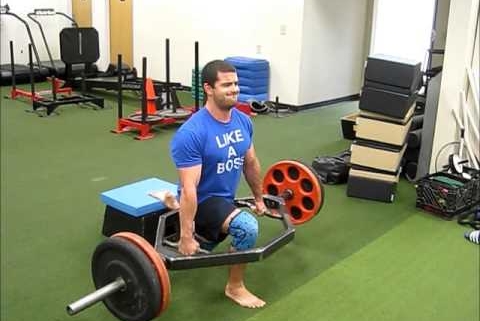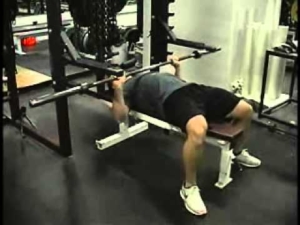How Isometrics Can Enhance Physical Potential
Hi guys,
Welcome back to the APA blog. We took a short break last week and today we are going to immerse ourselves in a topic which I have recently found interesting over the past few months. Training using isometrics. What is it and how can it be programmed. I will talk about:
What is an isometric contraction?
Why may you use isometrics?
Training transfer
How may this look like in a program?
What is an isometric contraction?
As we know muscles have three primary actions eccentric, isometric and concentric contractions. Physiologically, an isometric contraction occurs when there is no movement or change in length of the muscle itself, for example pushing against pins in a quarter squat position. Check out the video below to view this in action! Here we see the muscles working maximally but notice how there is no change in movement.
Alex Natara also mentions “Quasi-isometric contractions” which is defined as a short isometric burst in order to perform a sports specific task. A quasi-isometric or dynamic isometric occurs when rapid ‘stiffness’ is needed to produce a sports specific action, for example planting the leg during an outside cut. This differs to traditional methods of isometrics for example holding a wall sit for a set period of time.
Interesting point: Whilst the old adage suggests an isometric contraction is characterised by no change in muscle length, Jay Schoder indicates that the muscle is actually slowly shortening and the tendons lengthen resulting in no net movement.
“In this scenario where the joint of the athlete is not moving, the muscle is actually slowly shortening, while the tendon is slowly lengthening, and the total net movement is zero since the joint doesn’t go anywhere. This is the reason that in the Jay Schoeder system, isometric exercises are often referred to as “extreme slows” (although there is another form of extreme slow exercise here, but I won’t expand on it now for the sake of simplicity).”
What are the various Isometric themes?
To my knowledge, there are four types of isometric themes or exercise types, I will briefly explain each.
- Overcoming isometrics are attempting to move an immovable object by pushing or pulling on it.
- Yielding isometrics can be defined as the attempt to hold a weight or position without succumbing to the forces of gravity.
- Extreme isometrics are characterized by very long duration holds (up to 5 minutes), at large joint angles. Importantly, there is not only a large demand placed on an athlete’s physiology but also mental and emotional integrity!
- Oscillatory isometrics have received meteoric popularity. They are characterized by a contract-relax cycle. The ability to rapidly relax and contract a muscle. Practically, this requires the athlete to tense the prime mover responsible for concentric movement and then release it as fast as possible. This will look like a bouncing motion.
“Faster athletes are fast, not only because of fast-twitch muscle, but because of the relaxation ability of muscle. Slower athletes cannot “turn off” muscles fast enough!” Joel smith
- Sensory isometrics are mainly used in a rehab environment or as part of the “activation” phase of the warm up. These are primarily used to improve the neural connections with very little fatigue
Why you may consider using isometrics?
There are a number of reported benefits of using isometric exercises, you may even use them already without realising the specific rationales, but I have learnt that it takes skill; to purposefully apply a particular training method with an understanding of its intention.
The benefits are well reported in literature but I would like to outline a few in this blog:
- Improved tendon and joint health
- Minimal muscle soreness
- Increased neural drive and efficiency
- Increased work capacity
- Can aid in training recovery
- Strength through sticking points
- Strength in ranges of motion particular to your sport
Now, what I particularly like about isometrics is the diversity of benefits from increased neural drive to enhancing training recovery. If we work in a team sport setting and we have tight game day turnarounds we want to limit soreness where we can whilst reaching similar weekly training volumes. The beauty of isometrics is also their strategic implementation in a training year. We can also use sensory isometrics as an ‘activation’ part of the warm up to enhance neural drive to key muscle groups, I personally have seen a lot of benefit in this. Arguably, we can reach new heights in sport specificity, with isometric training, for example intramuscular and intermuscular coordination through oscillatory isometrics, in similar joint angles seen in the context of the sport.
Training transfer?
We can all agree that we are interested in the training that make our athletes better in their sport. ‘No fluff’. There are a few blogs that have been written about training transfer but I think isometrics, if used intelligently, can transfer to the sport. I will suggest only a few reasons, as this will warrant a blog of its own. Firstly, specificity is subjective to many coaches, I believe that it operates on a continuum and you have to figure out what is appropriate for the athlete at that particular time. Check out my blog on ‘training the youth athlete, how specific to the sport do we have to be’.
If we look at the physiology of many sports, particularly team and court based sports, it requires short isometric bursts at various joint angles, in sprinting, jumping and change of direction. We see this through quasi-isometric contractions (stiffness) mentioned above. Additionally, athletes need to maintain their shapes, whilst overcoming the forces such as gravity. In sprinting if the athlete does not possess enough stiffness at the ankle joint then they will be unable to transfer and absorb force to and from the ground, another example may be in Rugby Union where a prop forward needs to maintain their shape in a scrum.
How may this look in a training program?
This is the question that I have always asked myself, so I researched it. Many roads lead to Rome, but I would like to give you a few scenarios where you may use this sort of training. A concise blog I have based this article on gives a few examples of how to incorporate isometrics into a program. I will outline some of their ideas and perhaps, you can get creative in your own environment and sports which will require a needs analysis.
Extreme isometrics
A good start point seems to incorporating some extreme isometrics using bodyweight variations. Some coaches call these “burners” but these particular type of isometrics increase the work capacity of the muscle, some coaches like to work up to five minutes but this will depend on the individual. The article advises two to three minutes broken up into smaller chunks of time.
e.g.
- 10 seconds on, 10 seconds break
- 20 seconds on, 10 seconds break
- 30 seconds on, 10 seconds break
- 40 seconds on, done
Due to the reported reduced muscle soreness with this type of training it is possible to increase training frequency!
Overcoming isometrics
True overcoming isometrics require maximal voluntary contraction, as a result a participant will experience high levels of motor unit recruitment, making this a perfect modality for contrast training. Additionally, coaches have used it in programs alone in specific joint angles for the sports they’re working with for example, ankle and hip extension in the top end of sprint performance. Some elite coaches have suggested that they have seen immediate improvements in their flying 10m sprint speed as a result of using specific isometric work.
“An example of how you might incorporate this type of work into a weekly session if having 2 intense training days in a week would be:
- Day 1: 30m acceleration starts, standing triple jump, hex bar deadlift
- Day 2: Flying 10m sprints superset/coupled with overcoming plantar flexion ISO or overcoming hip extension ISO, hurdle hops.”
Oscillatory isometrics
The man who grasps principles can successfully select his own methods. The man who tries methods ignoring principles, is sure to have trouble Harrington Emerson
You can implement this type of method for any exercise, the skill is knowing how and when. In well adapted athletes there seems to be debate as to the transfer of traditional barbell exercises to athletic performance. These are probably best reserved for the “specific” phase of the training year. Also known as “reflexive power” these exercises can be used on dynamic effort days or again, contrasted with more traditional barbell lifts.
Unlock your athletes potential and thanks for reading guys!
Konrad Mckenzie
Strength and conditioning coach
Follow me on instagram @konrad_mcken
- If you’re not subscribed yet, click here to get free email updates, so we can stay in touch.
- Share this post using the buttons on the top and bottom of the post. As one of this blog’s first readers, I’m not just hoping you’ll tell your friends about it. I’m counting on it.
- Leave a comment, telling me where you’re struggling and how I can help
Since you’re here…
…we have a small favor to ask. APA aim to bring you compelling content from the world of sports science and coaching. We are devoted to making athletes fitter, faster and stronger so they can excel in sport. Please take a moment to share the articles on social media, engage the authors with questions and comments below, and link to articles when appropriate if you have a blog or participate on forums of related topics. — APA TEAM






